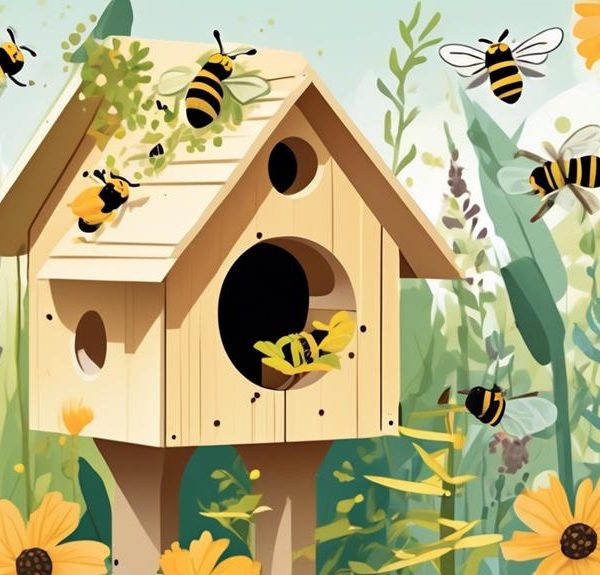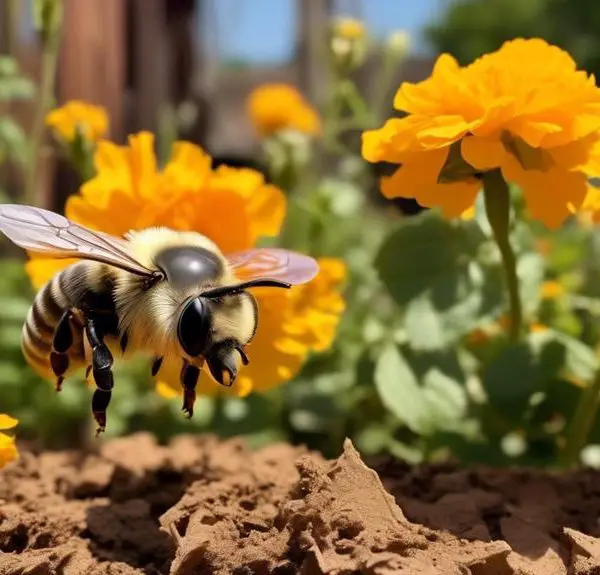Witness the astonishing world of leafcutter bees and discover how hole size crucially shapes their life cycle and offspring survival.
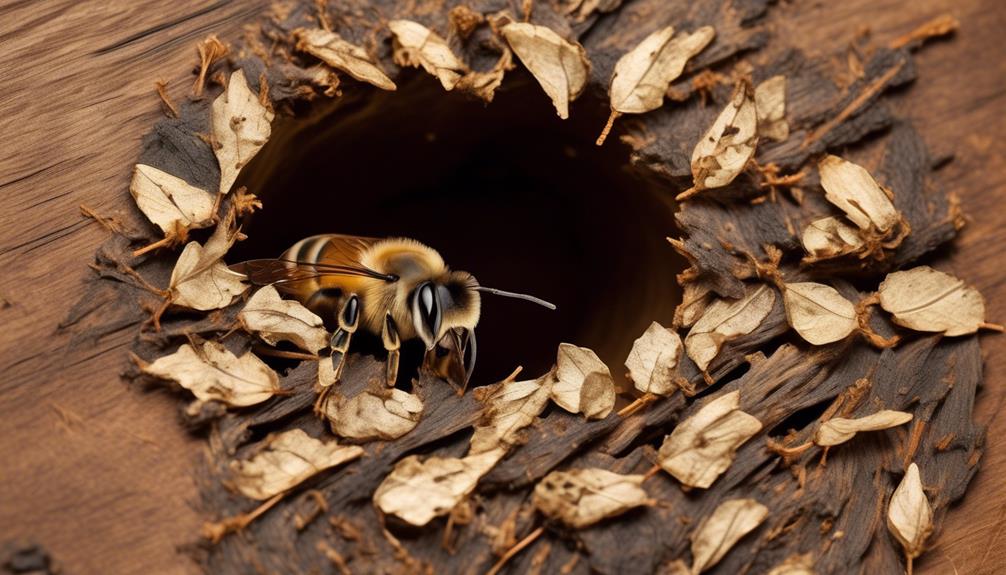
Leafcutter Bee Hole Size
Bountiful buzzers, leafcutter bees are fascinating creatures with unique nesting habits that are worth exploring.
You might consider the hole size these bees create as a minor detail, but in reality, it's a fundamental factor that greatly influences their life cycle.
Did you know the size and shape of these holes can determine the health and survival of their offspring? It's true, but that's only scratching the surface of this intriguing subject.
Stick around, as there's much more to uncover about these tiny architects and the importance of their hole size.
Key Takeaways
- Leafcutter bees rely on pre-formed holes in wood or hollow stems for nesting.
- The ideal hole size for leafcutter bees is between 1/4 and 1/2 inch in diameter.
- The size of the hole impacts the bees' nesting habits and overall population.
- The right hole size promotes the health and survival of leafcutter bees and their offspring.
Understanding Leafcutter Bee Biology
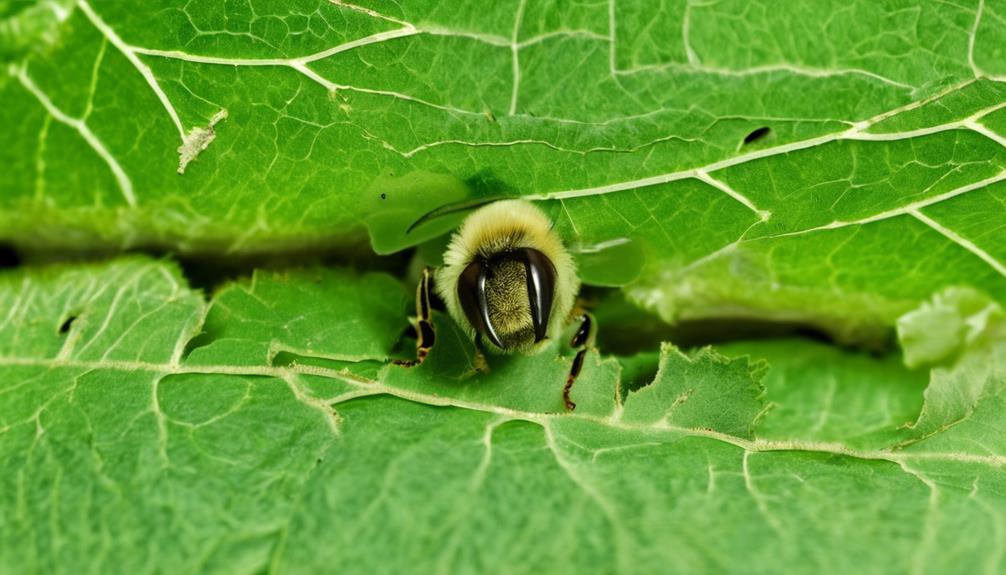
To truly comprehend the unique biology of leafcutter bees, it's essential to delve into their intricate nesting habits, which notably involve the creation of chambers using cut leaf fragments. This behavior isn't random; it's a calculated effort to protect their offspring from predators and harsh environmental conditions. As a species, leafcutter bees exhibit a level of sophistication and resourcefulness that's rare among insects.
Now, you might wonder, how do they cut these leaves? Well, their mandibles are designed for this very function. They're sharp and strong, capable of snipping through leaves with surgical precision. The female bee uses these cut-outs to line the walls and seal off individual chambers within the nest, each housing a single egg.
Furthermore, understanding their hole size preference can give you insight into their nesting behavior. Leafcutter bees prefer holes that are 1/4 to 1/2 inch in diameter, a size that provides optimal protection for the developing larvae. The females carefully select leaves and petals that are just the right thickness to fit into these holes, a testament to their meticulous nature.
You see, every aspect of leafcutter bee biology is shaped by an evolutionary drive for survival and reproduction.
The Significance of Hole Size
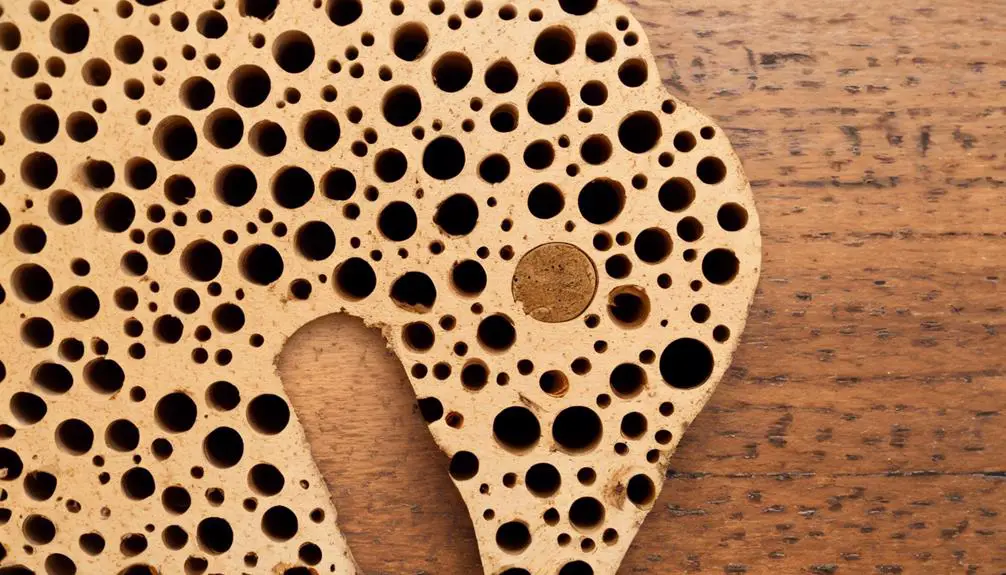
You might think the size of a hole is a minor detail, but for leafcutter bees, it's a critical aspect of their survival strategy. The diameter of the hole plays a significant role in the bees' nesting habits, impacting their reproduction and overall population.
Leafcutter bees aren't your typical honey-producing bees; instead, they're solitary creatures that nest in pre-existing cavities. They don't have the physical strength to bore into solid wood, so they rely on pre-formed holes. Here's where the size matters: the holes need to be just right – not too big, not too small. Ideally, the diameter should be between 1/4 and 1/2 inch.
Why is this so important? Well, it's all about protection and productivity. A hole of the right size offers a secure space for the bee to lay its eggs, safe from predators and harsh weather conditions. It also allows the bee to efficiently use its leaf-cutting skills to line the hole and create individual cells for its offspring.
Nesting Habits of Leafcutter Bees
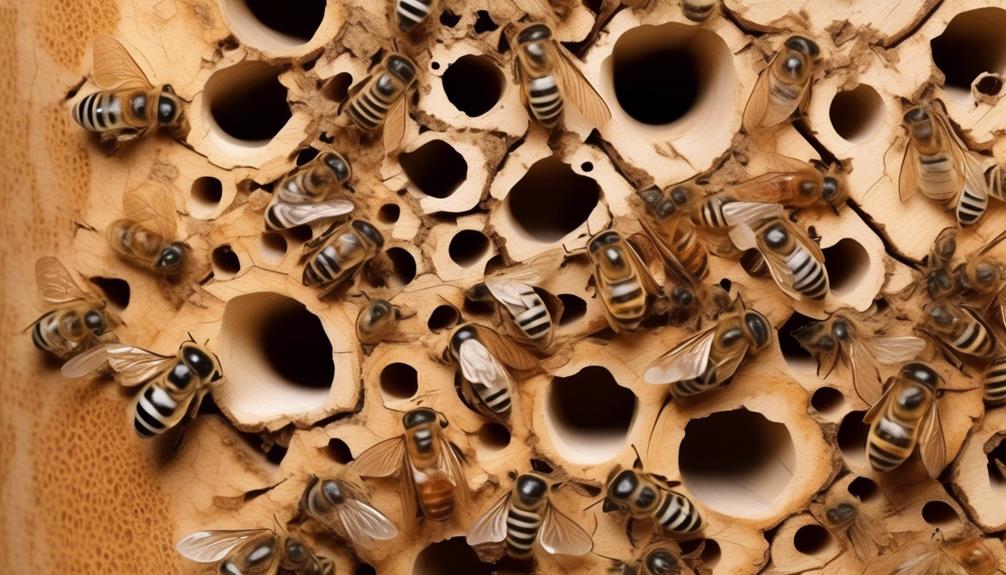
Ever wondered how leafcutter bees set up their homes? These industrious insects don't build traditional hives like their honeybee counterparts. Instead, they favor pre-existing holes in wood or hollow stems, into which they craft their unique, leaf-lined nests.
Leafcutter bees are solitary creatures, meaning each female bee is responsible for building and stocking her own nest. The bee will cut precise circles out of leaves, which she'll use to create cylindrical cells inside her chosen hole. It's here that she'll lay her eggs, one in each cell, along with a provision of pollen and nectar for the emerging larvae to feed on.
The size of the hole plays a significant role in the species of leafcutter bee that might inhabit it. Generally, leafcutters prefer holes that are 1/4 to 1/2 inch in diameter. The length of the hole can vary, but the deeper it is, the more cells the bee can create, resulting in more offspring.
Understanding these nesting habits is critical for those interested in attracting leafcutter bees for pollination. Providing suitable habitats, with holes of the correct size, can significantly aid in the conservation of these beneficial insects.
Hole Size and Bee Health

It's worth noting that the size of the hole not only affects the species of leafcutter bee that might inhabit it, but also has a significant impact on the health and survival of the bee's offspring. A hole size that's too small can hinder the growth and development of the larvae, as it limits their space to grow and restricts their access to vital nutrients supplied by the mother bee.
Conversely, a hole that's too large can expose the vulnerable larvae to predators, parasitic infestations, and harsh environmental conditions. This risk is due to the inability of the mother bee to adequately seal and protect a large hole using leaf cuttings.
Temperature regulation, a critical aspect of bee health, is also influenced by hole size. Smaller holes provide better insulation, maintaining optimal temperatures for incubation and pupation. Larger holes, on the other hand, can cause temperature fluctuations detrimental to the bees' development.
Therefore, you must consider the right hole size when setting up nesting sites for leafcutter bees. By doing so, you're not just encouraging biodiversity but also promoting the health and survival of these important pollinators.
Influencing Factors on Hole Size

Several factors come into play when determining the ideal hole size for leafcutter bees. These factors include the species' specific needs, local climate conditions, and potential threats from predators or parasites.
Each bee species has unique preferences and requirements. For instance, the leafcutter bee prefers holes that are approximately 6-8 millimeters in diameter. This size ensures adequate space for egg-laying, pollen storage, and larval development.
Local climate conditions also influence the ideal hole size. In colder climates, bees tend to make smaller holes to minimize heat loss and maintain a stable internal temperature. Conversely, in warmer climates, larger holes allow for better ventilation and cooling.
The size of the hole can also serve as a strategic defense against predators and parasites. Smaller holes can deter larger predators, while certain sizes can discourage parasites like mites from entering.
However, it's important to note that the ideal hole size is not a one-size-fits-all situation. The balance between these factors means that the hole size can vary, even within the same species. As a leafcutter beekeeper, it is crucial to consider these dynamics to provide the optimal environment for your bees. This ensures their survival and productivity.
Conclusion
So, you've learned that the size of a leafcutter bee's hole is quite significant.
It influences their nesting habits, affects their health, and is determined by various factors.
Understanding this facet of their biology can provide insights into their overall behavior and survival strategies.
Keep in mind, the more knowledge we gather about these fascinating creatures, the better our chances of aiding in their conservation.
After all, every bit of information counts.

